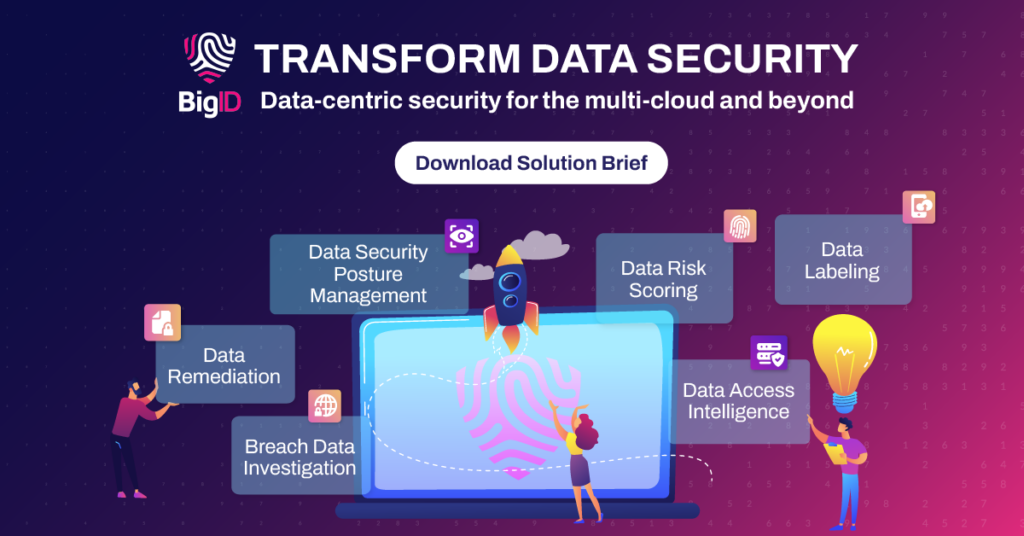Understanding Risk Management Framework (Including NIST RMF)
As an organization, you must straddle that fine line between mitigating security and privacy threats and complying with regulations. Fortunately, both these issues can be dealt with effectively by implementing a robust Risk Management Framework (RMF). So, what is an RMF and why is it important?
What Is an RMF?
An RMF, like the NIST risk management framework, is a series of processes, tools, and methodologies that help you identify your risks and take steps to mitigate and manage them. It is a structured system for comprehensive risk reporting and monitoring so you can make informed decisions about risk mitigation strategies and allocate resources effectively.
It uses an impact analysis to evaluate the potential consequences of different risks and prioritizes them accordingly for better risk management. As such, it lowers your overall operational risk and helps you take advantage of positive risks while maintaining organizational objectives.
Why is a Risk Management Framework Important?
Consider this:
Cybersecurity Breaches and Costs
According to IBM’s Cost of a Data Breach Report 2021, the average total cost of a data breach increased to $4.24 million globally. The financial impact can include loss of business, legal fees, and potential fines and penalties.
Rise of Insider Threats
The Ponemon Institute’s 2021 Cost of Insider Threats Report found that the average annual cost of insider threats rose to $11.45 million in 2020, a significant increase compared to previous years. So, what is insider risk? It’s when the actions of someone within your business result in a breach or security incident. It doesn’t have to be intentional or malicious; sometimes, responding to a phishing email or setting a weak password can be enough. Whether intentional or unintentional, insider threats pose a considerable risk to organizations.
Regulatory Compliance Challenges
Data privacy regulations such as the General Data Protection Regulation (GDPR), California Consumer Privacy Act (CCPA), and Health Insurance Portability and Accountability Act (HIPAA) have complex compliance requirements on how you must handle consumer data, including protecting it from unauthorized access. Understanding the overall risk to your business information helps you manage and protect it better. You need to demonstrate that you’re doing everything in your power to keep sensitive personal information safe. If your organization is found wanting in an audit, you face severe financial penalties and reputational damage.
Impact of Supply Chain Disruptions
The COVID-19 pandemic brought to light how vulnerable global supply chains are to disruptions. According to a report by the Business Continuity Institute, 73% of organizations experienced at least one incident with their supply chain in 2020, with 43% reporting financial losses as a result.
By identifying potential risks, a risk management framework helps you preempt situations which could disrupt your business. It gives you the risk governance you need to keep your organization compliant with the relevant data privacy and security regulations. It allows you to foresee any information security and privacy vulnerabilities, whether from inside or outside your business, and put in measures to prevent them or minimize their damage.
Emerging Technologies and Threats
Artificial intelligence (AI), cloud computing, and Internet of Things (IoT) are all new technologies that are being adopted rapidly. As such, they introduce new risks and challenges for organizations, such as AI-powered cyberattacks, cloud security vulnerabilities, and IoT device vulnerabilities. Proactive risk management strategies can help you address them.
Benefits of Effective Risk Management Frameworks
RMF helps organizations
- Identify and Assess Risks: When you systematically identify potential threats and vulnerabilities, you can better understand their risk landscape and prioritize mitigation efforts.
- Mitigate Risks: A structured approach to implementing controls and measures reduces the likelihood and impact of risks.
- Ensure Compliance: Establishing processes for risk assessment, documentation, and reporting helps you better comply with regulatory requirements and industry standards.
- Improve Decision-Making: A framework that evaluates risks and determines appropriate responses helps you make informed decisions about resource allocation and risk tolerance.
Types of Risk Management Frameworks
There are several established RMF frameworks used worldwide, including:
National Institute of Standards and Technology (NIST) RMF
NIST’s RMF is a widely adopted framework that offers a flexible and scalable approach to managing cybersecurity risks across various industries. It provides a structured process for identifying, assessing, and mitigating risks to organizational assets and information systems. The NIST RMF emphasizes continuous monitoring, adaptive security practices, and integration with existing risk management processes.
This framework was originally developed to support compliance with the Federal Information Security Modernization Act (FISMA), which is why it’s the official risk management framework for securing federal information systems.
NIST has also developed the Cybersecurity Framework (CSF), a voluntary, high-level guide that helps organizations structure and improve cybersecurity practices more broadly.
Additionally, the Federal Risk and Authorization Management Program (FedRAMP) builds on RMF principles to standardize cloud security assessments and authorizations for cloud service providers working with federal agencies.
By leveraging the NIST RMF, organizations can establish robust cybersecurity programs that align with industry best practices and regulatory requirements.
Department of Defense (DoD) RMF
The DoD RMF is designed to meet the cybersecurity requirements of government agencies and contractors operating within the Department of Defense. It provides a structured approach to managing information security risks associated with DoD systems, networks, and operations through continuous monitoring, risk-based decision-making, and compliance with DoD policies and guidelines. By implementing the DoD RMF, organizations can ensure the security and resilience of their information systems while aligning with government regulations and standards.
ISO 31000
ISO 31000 is a standard risk management policy developed by the International Organization for Standardization (ISO) that applies to organizations of all sizes and sectors. Where others focus primarily on cybersecurity risks, this framework addresses a broader range, including strategic, operational, financial, and compliance risks. It provides principles, framework, and guidelines for implementing effective risk management practices throughout an organization. By adopting ISO 31000, your business can enhance its ability to identify, assess, and respond to risks in a systematic and structured manner, ultimately improving decision-making and performance.
COSO Enterprise Risk Management (ERM) Framework
The COSO ERM framework integrates risk management into an organization’s strategic planning and decision-making processes by aligning it with the corporate objectives, values, and culture. The framework comprises eight components: internal environment, objective setting, event identification, risk assessment, risk response, control activities, information and communication, and monitoring activities. The COSO ERM framework help you establish a risk-aware culture, enhance governance practices, and improve your ability to anticipate and respond to risks effectively.
FAIR (Factor Analysis of Information Risk)
FAIR is a quantitative risk management framework that enables organizations to measure and analyze cybersecurity risks in financial terms. Unlike qualitative risk assessment methods, FAIR provides a structured approach for quantifying loss events’ probable frequency and magnitude. It utilizes concepts such as risk factors, loss scenarios, and risk appetite to calculate the potential impact of cybersecurity risks on an organization’s assets and operations. By adopting FAIR, you can prioritise risk mitigation efforts, allocate resources more effectively, and communicate risk-related information in a language that resonates with stakeholders, including executives and board members.
The Components of the NIST Risk Management Framework
The NIST Risk Management Framework (NIST RMF) consists of the following components:
- Prepare: Get your organization ready to manage security and privacy risks by establishing a risk management strategy, assigning roles and responsibilities, and identifying common control baselines.
- Categorize: Index your organization’s information systems based on the potential impact of a loss of confidentiality, integrity, or availability. Identify their criticality and determine the appropriate security requirements.
- Select: Specify the appropriate set of security controls to mitigate identified risks based on the categorization results, considering factors such as the system’s architecture, functionality, and operational environment.
- Implement: Integrate the selected security controls within your system’s design, configuration, and operational processes. Document security controls and their implementation details in this step.
- Assess: Evaluate the security controls to determine their effectiveness in mitigating identified risks, including the controls’ design, implementation, and operational effectiveness. Assessments may include testing, examinations, and evaluations conducted by independent assessors.
- Authorize: Put your system through an approval process, where management evaluates the residual risks and decides whether to allow the system to operate. These decisions are based on risk assessments, security control effectiveness, and organizational risk tolerance. If it passes, the system is granted permission to operate within its defined security parameters.
- Monitor: Continuously monitor security controls and risks associated with the system. Update security documentation, respond to ongoing threats, and reassess risks to maintain an acceptable security posture as part of your risk management program.

Implementing a Robust Risk Management Framework
Implementing a comprehensive risk management framework typically consists of these key steps:
- Risk Identification: Identify and document potential risks to the organization’s assets, including information systems, data, personnel, and operations.
- Risk Assessment: Evaluate the likelihood and impact of each identified risk through risk measurement techniques, considering factors such as threat vectors, vulnerabilities, and potential consequences.
- Risk Mitigation: Develop and implement controls and measures to mitigate identified risks, such as putting in control objectives for information, policies, and procedures.
- Risk Monitoring: Continuously monitor and assess changes in the risk landscape and adapt mitigation strategies accordingly.
- Risk Reporting: Document and report on risk management activities, including identifying new risks, changes to existing risks, and the effectiveness of mitigation efforts
Examples of Risk Management Framework Adoption
- The U.S. Department of Defense uses the DoD RMF to manage risks to its information systems and ensure the confidentiality, integrity, and availability of sensitive data.
- The National Aeronautics and Space Administration (NASA) adopted NIST’s RMF to manage risks associated with its space exploration missions and scientific research projects.
- Financial institutions such as JPMorgan Chase use FAIR to quantify and prioritize cybersecurity risks and allocate resources effectively.
Latest Developments in RMF
In recent years, RMF has evolved to address emerging threats and technologies. Some of the latest developments include:
- Integration of Artificial Intelligence (AI) and Machine Learning (ML) for risk assessment and threat detection.
- Adoption of cloud-based risk management solutions for scalability and flexibility.
- Focus on resilience and adaptability in the face of evolving cyber threats and geopolitical risks.
AI Risk Management
AI and automation are some of the newer considerations for RMF. As such, these technologies come with the following risk profiles:
- Bias and Fairness in AI Algorithms: AI systems can be subject to bias and discrimination, particularly in sensitive areas such as hiring, lending, and law enforcement.
- Security of AI Systems: AI models and algorithms are susceptible to attacks, manipulation, and exploitation, which require robust security controls.
- Ethical and Legal Implications: AI systems must be built with privacy, transparency, accountability, and compliance with regulations such as GDPR and CCPA.
BigID’s Approach to Effectively Mitigating Risk
BigID is the industry leading platform for data privacy, security, compliance, and AI data management offering intuitive and scalable solutions for organizations of all sizes.
With BigID you can:
- Know Your Data: Automatically classify, categorize, tag, and label sensitive data with unmatched accuracy, granularity, and scale.
- Improve Data Security Posture: Proactively prioritize and target data risks, expedite SecOps, and automate DSPM.
- Remediate Data Your Way: Centrally manage data remediation – delegate to stakeholders, open tickets, or make API calls across your stack.
- Enable Zero Trust: Reduce overprivileged access and overexposed data. Streamline access rights management to enable zero trust.
- Mitigate Insider Risk: Proactively monitor, detect, and respond to unauthorized internal exposure, use, and suspicious activity around sensitive data.
- Reduce Your Attack Surface: Shrink the attack surface by proactively eliminating unnecessary, non-business critical sensitive data.
To start implementing a more proactive risk management framework— get a 1:1 demo with our security experts today.


